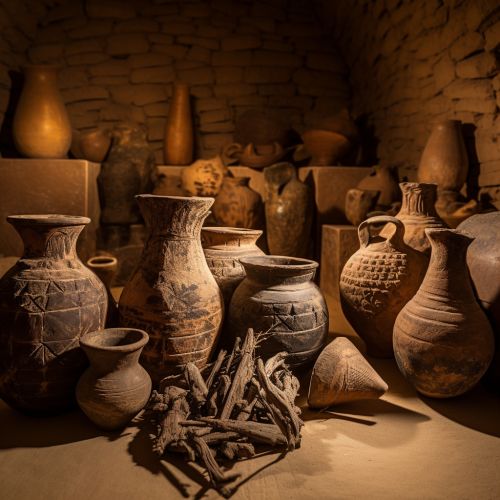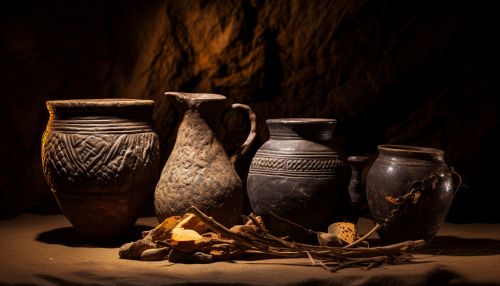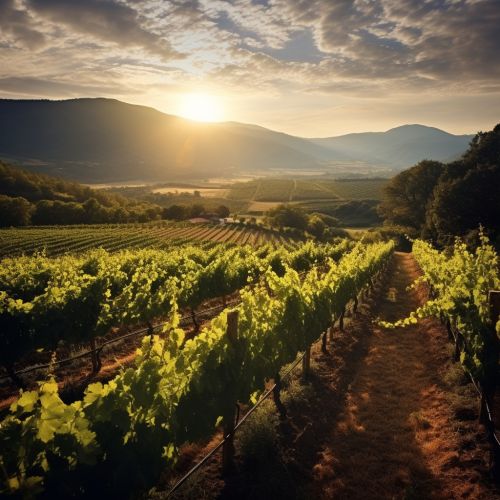Wine
History
Wine has a long history of wine, dating back thousands of years to the ancient civilizations of Mesopotamia and Egypt. The earliest archaeological evidence of wine production comes from sites in Georgia and Iran, dating from 6000 to 5000 BC. The production and consumption of wine was often associated with ritualistic and religious practices, and it played a significant role in the social and economic structures of these early societies.


Production
The production of wine involves several key steps, starting with the cultivation of grapevines. The grapes are harvested, crushed, and then fermented in a process that converts the sugars in the grape juice into alcohol. The fermented juice, or must, is then aged in barrels or tanks before being bottled. The entire process, from vine to bottle, can take several years and requires a great deal of skill and knowledge.
Types of Wine
There are many different types of wine, each with its own unique characteristics and flavor profiles. These include red wines, white wines, rosé wines, sparkling wines, dessert wines, and fortified wines. The type of wine is largely determined by the variety of grape used in its production, as well as the specific methods used during fermentation and aging.
Red Wine
Red wine is made from dark-colored grape varieties. The color of the wine can range from intense violet, typical of young wines, to brick red for mature wines and brown for older red wines. The juice from most purple grapes is greenish-white; the red color comes from anthocyan pigments present in the skin of the grape. The fermentation process involves contact with the grape skins, which imparts both color and tannins to the finished wine.
White Wine
White wine can be made from either white or black grapes. The skin of the grape is separated from the juice during the crushing process, resulting in a wine that is light in color. The flavors of white wine can range from light and zesty to rich and creamy, depending on the grape variety and the specific production methods used.
Rosé Wine
Rosé wine is made from red grapes, but the skin is only in contact with the juice for a short period of time, resulting in a wine that is pink in color. Rosé wines can range in style from dry to sweet, and they are often enjoyed as a refreshing drink in warm weather.
Sparkling Wine
Sparkling wine is a wine with significant levels of carbon dioxide in it, making it fizzy. The carbon dioxide may result from natural fermentation, either in a bottle, as with the traditional method, in a large tank designed to withstand the pressures involved, or as a result of carbon dioxide injection.
Dessert Wine
Dessert wines are sweet wines typically served with dessert. There is no simple definition of a dessert wine. In the UK, a dessert wine is considered to be any sweet wine drunk with a meal, as opposed to the white fortified wines drunk before the meal, and the red fortified wines drunk after it.
Fortified Wine
Fortified wine is a wine to which a distilled spirit, usually brandy, has been added. Many different styles of fortified wine have been developed, including Port, Sherry, Madeira, Marsala, Commandaria wine, and the aromatized wine Vermouth.
Viticulture
Viticulture is the science, production, and study of grapes. It deals with the series of events that occur in the vineyard. When the grapes are used for winemaking, it is also known as viniculture. It is one branch of the science of horticulture.


Wine Tasting
Wine tasting is the sensory examination and evaluation of wine. While the practice of wine tasting is as old as its production, a more formalized methodology has slowly become established from the 14th century onwards. Modern, professional wine tasters (such as sommeliers or buyers for retailers) use a constantly evolving specialized terminology which is used to describe the range of perceived flavors, aromas and general characteristics of a wine.
Health Effects
The health effects of wine are mainly determined by its active ingredient alcohol. Some studies found that, when comparing people that consume alcohol, drinking small quantities of alcohol (up to one standard drink per day for women and one to two drinks per day for men) is associated with a decreased risk of heart disease, stroke, diabetes mellitus, metabolic syndrome and early death. However, other studies found no such effect. Drinking more than the standard drink amount increases the risk of heart disease, high blood pressure, atrial fibrillation, stroke and cancer.
Wine and Culture
Wine has had a profound influence on culture throughout history. In many societies, both ancient and modern, wine has been used for religious rituals, celebrations, and social gatherings. It has been a symbol of luxury and refinement, as well as a staple of daily life. The cultural significance of wine continues to be reflected in contemporary society, from the art of wine tasting to the global economic importance of the wine industry.
